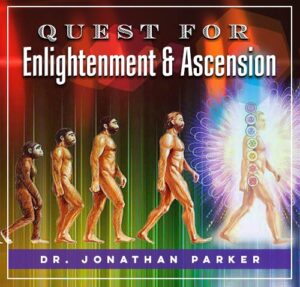What Is the Key to Understanding the Universe?

Looking for more amazing products? Check out our online store and explore our collection here! Happy shopping!
Before diving in, please note: This post is for informational purposes only. If you’d like to know more about how we approach topics, feel free to check out our friendly Disclaimer Page.
Hey there, amazing readers! 
We’re committed to delivering quality posts, and your support (even just sticking around despite the ads) means everything to us. So, bear with us, and thanks for helping us keep the good vibes rolling. Now, on to the fun stuff!
TRANSLATE BUTTON AT THE END OF THE ARTICLE
A Quick Overview
The quest to understand the universe is a thrilling adventure that stirs our imagination and pushes the boundaries of our knowledge.
It encompasses everything from the tiniest particles to the grandest galaxies.
What lies beyond our blue planet?
What makes the stars twinkle?
How did everything we see around us come to be?
These questions have haunted humanity for centuries, and answering them requires a mix of curiosity, scientific method, and a sprinkle of creativity.
Let’s embark on this exploration together, diving into the key elements that help us decode the mysteries of the universe.
Exploring the Cosmos: A Journey Begins with Curiosity
Curiosity is the spark that ignites our journey into the cosmos.
It’s what leads a child to gaze up at the night sky, wondering about the stars.
I remember lying on my back in my backyard, counting stars and imagining what lay beyond.
That sense of wonder is universal.
Every great scientific discovery starts with someone asking, “Why?” or “What if?”
Think about it: every great breakthrough—from Galileo’s telescope to the Hubble Space Telescope—was driven by that burning desire to know more.
Researchers spend countless hours pondering the universe’s enigmas, and often the best ideas emerge from simple, childlike curiosity.
Moreover, curiosity fuels creativity.
It encourages thinkers to explore unconventional theories.
Imagine if we only accepted what we already knew?
We wouldn’t have the extensive knowledge we do today.
Curiosity pushes us to look beyond the obvious.
It invites us to question everything and explore new avenues of thought.
In the grand scheme of things, curiosity isn’t just about scientific inquiry.
It’s about our connection to the universe.
It makes us feel small yet significant.
Each question we pose is like a tiny thread in the rich tapestry of existence, weaving together our experiences, aspirations, and discoveries.
The Role of Science in Unlocking Universal Mysteries
Science serves as our guiding compass in the quest to understand the universe.
It provides us with a systematic way to explore, test, and validate our hypotheses.
Through experimentation and observation, we gather evidence that helps clarify our understanding.
Consider the scientific method, an elegant framework that starts with a question, leads to observation, and culminates in experimentation.
By following this path, scientists have pieced together a narrative of cosmic events.
Explore the Path to Spirituality and Enlightenment – Start Here.
For instance, through rigorous testing, the theory of gravity emerged.
Sir Isaac Newton, with his astute observations, uncovered principles that govern celestial bodies.
Moreover, science is collaborative.
Researchers across the globe share findings, ideas, and insights.
Each piece of research contributes to a larger puzzle, helping us understand phenomena such as black holes, dark matter, and cosmic microwave background radiation.
Remember the excitement generated when the Higgs boson was discovered?
That was the work of thousands of scientists pooling their knowledge and resources!
While science may seem like a rigid discipline, it is often filled with creativity and imagination.
Scientists must think outside the box, especially when faced with questions that have yet to be answered—like what happened before the Big Bang!
These mysteries inspire us to delve deeper, explore uncharted territories, and continually expand our collective understanding.
Observations: How Telescopes Reveal the Hidden Cosmos
Telescopes are like time machines, allowing us to peer into the past and grasp the vastness of space.
They provide us with a crucial tool for observing celestial objects and phenomena.
The development of telescopes has revolutionized our understanding of the universe, enabling us to see beyond our own solar system.
From Galileo’s early models to the sophisticated instruments we have today, telescopes have come a long way.
They capture the light from distant stars and galaxies, allowing us to study their characteristics.
The Hubble Space Telescope, for example, has provided stunning images that reveal the beauty and complexity of our galaxy.
What’s fascinating is how these instruments work.
They collect electromagnetic radiation—light, radio waves, infrared signals, and more—transforming them into data we can analyze.
This data allows astronomers to understand a galaxy’s composition, age, and distance from Earth.
But the wonders don’t stop there.
Telescopes like the James Webb Space Telescope are set to take our understanding to new heights.
They aim to explore the early universe and search for exoplanets.
The excitement around these advancements is palpable, and it’s a reminder of how much more there is to discover.
In short, telescopes help us visualize the universe.
They ignite our imagination and fuel our desire to explore.
Each image they capture is a glimpse into a world we may never physically visit, yet it fosters a connection that spans light-years.
The Language of Mathematics: Decoding the Universe
Mathematics serves as the universal language of the cosmos.
It enables us to express complex ideas simply and precisely.
Just like a skilled chef needs to know their measurements, scientists and astronomers rely on mathematical principles to make sense of the universe’s intricate tapestry.
Equations describe everything from the motion of planets to the behavior of particles.
Newton’s laws of motion and Einstein’s theory of relativity are prime examples of how math articulates physical phenomena.
Each equation tells a story, revealing how things interact and the fundamental laws that govern them.
Remember the thrill of solving a challenging math problem?
That’s how scientists feel when they crack a cosmic equation.
For instance, the discovery of gravitational waves was rooted in Einstein’s equations.
When those waves were finally detected, it was like tuning into a frequency that had been silent for eons.
Mathematics also helps predict future events.
Astronomers can calculate the trajectory of comets or the orbit of planets.
It allows us to forecast celestial events, such as eclipses, with remarkable accuracy.
Furthermore, math helps bridge gaps between disciplines.
Physicists, chemists, and astronomers often collaborate, using mathematical models to explore topics like dark matter and quantum mechanics.
This cross-pollination of ideas highlights how math is not just a tool but a connecting thread in the fabric of scientific inquiry.
Understanding Forces: Gravity, Light, and Beyond
Forces are the invisible threads that weave the cosmos together.
Gravity, light, and electromagnetic forces shape our universe, influencing everything from the motion of planets to the behavior of light itself.
Gravity is perhaps the most familiar force.
It’s what keeps us grounded on Earth and governs the orbits of celestial bodies.
I can’t help but marvel at how gravity from a massive star can bend light, creating stunning cosmic phenomena like gravitational lensing.
Light, on the other hand, travels at incredible speeds, carrying information about the universe.
When we look at stars, we’re seeing light that has traveled across vast distances.
It’s like a cosmic postcard from the past!
Scientists analyze this light to determine the composition, temperature, and distance of stars and galaxies.
However, it’s not just gravity and light that matter.
The electromagnetic force plays a crucial role in the interactions of particles.
It governs how atoms bond and form molecules, allowing the existence of matter as we know it.
Without these forces, our universe would look vastly different, if it existed at all.
Understanding these forces also opens doors to new scientific frontiers.
For example, the exploration of dark energy—a force that seems to be accelerating the universe’s expansion—challenges our traditional understanding of physics.
In essence, these forces are the building blocks of the universe.
They create the dance of cosmic bodies and the ebb and flow of energy.
By studying them, we gain insights into how everything is interconnected.
The Big Bang Theory: Our Universe’s Grand Genesis
The Big Bang Theory is the most widely accepted explanation for the origin of our universe.
It proposes that around 13.8 billion years ago, the universe began as an infinitely small point, bursting forth in a cataclysmic explosion.
This idea may seem mind-boggling, but it explains a lot about what we see today.
The universe has been expanding ever since that initial explosion, giving rise to galaxies, stars, and planets.
The cosmic microwave background radiation—an afterglow of the Big Bang—provides crucial evidence supporting this theory.
I often find it fascinating how scientists can study the remnants of this event.
By analyzing the distribution of galaxies and the cosmic background radiation, they can infer the universe’s structure and history.
It paints a picture of a universe that is dynamic and ever-evolving.
Yet, the Big Bang Theory raises even more questions.
What caused the initial singularity?
What happened before the Big Bang?
These mysteries keep researchers up at night, pondering the limits of our understanding.
Despite these unanswered questions, the Big Bang Theory remains a cornerstone of cosmology.
It offers a framework for exploring the universe’s past and helps us contemplate its future.
Who knows?
Perhaps one day, we’ll uncover the next chapter in this grand cosmic story.
Cosmic Structures: From Galaxies to Dark Matter
The universe is filled with majestic structures, from sprawling galaxies to mysterious dark matter.
Galaxies, vast collections of stars, gas, dust, and dark matter, are the building blocks of the cosmos.
Our own Milky Way is just one of billions, each with its unique characteristics.
What’s particularly intriguing is the role of dark matter.
It doesn’t emit light, making it invisible, yet it exerts gravitational forces on visible matter.
Scientists theorize that dark matter accounts for about 27% of the universe’s mass.
It’s like the unseen glue that holds galaxies together.
Understanding these cosmic structures helps us grasp the universe’s fate.
Observations reveal how galaxies collide and merge, triggering new star formation.
This cosmic dance illustrates the dynamic nature of the universe.
I can almost imagine galaxies swirling and twirling through space—a celestial ballet!
Moreover, the study of cosmic structures leads to insights about the overall shape of the universe.
Is it flat, open, or closed?
These questions require collaboration and advanced measurement techniques.
Projects like the Sloan Digital Sky Survey have mapped millions of galaxies, providing valuable data for researchers.
As we peer deeper into the cosmos, we not only discover more about its structures, but we also learn about our place within it.
Each galaxy we observe is a reminder of the vastness of existence and our tiny role in this grand tapestry.
The Fabric of Space-Time: What It Is and Why It Matters
Space and time are intertwined in a fabric known as space-time.
This concept revolutionized our understanding of the universe, thanks to Einstein’s theories.
Instead of viewing space and time as separate entities, we now see them as interconnected dimensions.
Imagine bending a rubber sheet with a heavy object.
The sheet represents space-time, and the object represents a massive body like a star.
This bending illustrates how mass affects the structure of space-time, causing gravity.
It’s a mind-bending concept that helps explain why planets orbit stars and why light bends near massive objects.
Understanding space-time is crucial for comprehending phenomena like black holes.
These enigmatic regions have such strong gravitational pull that nothing, not even light, can escape.
The study of black holes challenges our understanding of physics, opening doors to new theories and possibilities.
Space-time also plays a role in the expansion of the universe.
The fabric is stretching, causing galaxies to move away from each other.
This expansion was a groundbreaking discovery that reshaped our understanding of cosmic evolution.
Moreover, contemplating space-time invites philosophical questions.
What does it mean for time to flow?
Is time an illusion?
These questions highlight the intersection between science and philosophy, urging us to ponder our place in the cosmos.
Quantum Mechanics: The Tiny World That Shapes Us
Quantum mechanics delves into the behavior of the smallest particles in our universe.
It’s a realm that defies our everyday experiences and challenges our understanding of reality.
In this tiny world, particles can exist in multiple states at once, and their behavior can seem downright peculiar.
Take, for instance, the concept of superposition.
A particle can be in two places at once until observed, at which point it "chooses" a position.
This idea is famously illustrated by Schrödinger’s cat—a thought experiment that challenges our perceptions of existence.
Moreover, quantum entanglement introduces the concept of particles being interconnected regardless of distance.
Changes to one particle can instantaneously affect another, even if they’re light-years apart.
This phenomenon has baffled scientists and has led to exciting advancements in quantum computing and cryptography.
Understanding quantum mechanics is vital for grasping the universe’s fundamental workings.
It provides insights into atomic behavior, chemical reactions, and even the nature of light.
The applications of quantum theory are vast, influencing technology and our understanding of the cosmos.
As we explore the quantum realm, we realize that the universe is a tapestry woven with intricate threads of possibility.
Each discovery opens new doors, challenging our long-standing beliefs and expanding our understanding of reality.
The Human Mind: Our Greatest Tool for Understanding
As we navigate the wonders of the universe, we must acknowledge the role of the human mind.
It’s our most powerful tool for exploration.
Our capacity for reasoning, creativity, and imagination has driven us to question, discover, and innovate.
Throughout history, brilliant minds have contributed to our understanding of the cosmos.
Think of Copernicus, who proposed that the Earth revolves around the sun, or Marie Curie, whose groundbreaking work laid the foundation for modern physics.
Their insights remind us of the potential each of us has to contribute to our shared knowledge.
Moreover, the human mind thrives on collaboration.
Scientists come together, sharing ideas and expertise to tackle complex problems.
Conferences, papers, and discussions create a vibrant exchange of knowledge that fuels discovery.
But it’s not just about intellect.
Empathy, curiosity, and resilience play vital roles in our pursuit of understanding.
The journey of discovery is often filled with setbacks, but it’s the passion to keep asking questions that drives us forward.
In essence, the human mind is a remarkable vessel for understanding the universe.
It transforms curiosity into knowledge, and knowledge into progress.
We are all part of this grand narrative—a story of exploration, discovery, and connection to the cosmos.
Collaboration: How Scientists Unite to Unravel Mysteries
The mysteries of the universe are too vast for any one person to solve alone.
Collaboration is key!
Scientists from various fields—astronomy, physics, mathematics, and even philosophy—come together to pool their knowledge.
Consider large-scale projects like the Large Hadron Collider.
Thousands of scientists and engineers from around the world contribute to unraveling the mysteries of particle physics.
Each individual’s expertise adds depth to the collective understanding.
Additionally, international collaborations, such as the Global Telescope Network, allow researchers to share data and observations.
By working together, they enhance the accuracy of their findings and accelerate discovery.
This spirit of cooperation extends beyond borders.
It’s a testament to our shared goal of understanding the universe.
Each time a new discovery is made, it’s built upon the shoulders of countless contributors.
Moreover, interdisciplinary collaboration fosters innovation.
By blending ideas from different fields, scientists can approach problems from multiple angles.
This creative synergy can lead to breakthroughs that wouldn’t be possible in isolation.
In short, collaboration is the heartbeat of scientific discovery.
It unites us in our quest for knowledge, reminding us that we’re all part of a larger story—a cosmic narrative filled with wonder and possibility.
Embracing the Unknown: The Endless Quest for Knowledge
The universe is vast, and its secrets are many.
Embracing the unknown is essential for growth and discovery.
Each unanswered question is an invitation to explore further, to dig deeper, and to challenge our understanding.
Many scientists find beauty in uncertainty.
It’s the thrill of the chase that keeps them motivated.
I often think about how explorers ventured into uncharted territories, facing the unknown with courage and curiosity.
Facing the unknown can be daunting, but it’s also exhilarating.
It compels us to innovate, adapt, and think creatively.
Every great advancement in science stems from a willingness to tackle the questions that lie before us, even when the answers are elusive.
Moreover, the realization that we don’t have all the answers invites humility.
It reminds us that the universe is an intricate puzzle that we’re continually piecing together.
Each fragment of knowledge contributes to a larger picture, yet we must remain open to the possibility that there’s always more to discover.
As we navigate this quest for knowledge, let’s celebrate the thrill of uncertainty.
It’s what makes our journey so exciting!
The endless quest for understanding is a testament to our resilience, curiosity, and capacity for wonder.
Conclusion
Understanding the universe is one of life’s greatest adventures.
From the spark of curiosity to the collaboration of brilliant minds, every aspect plays a vital role in our quest for knowledge.
As we explore the cosmos, we discover not only the mysteries of existence but also our connection to it.
Let’s keep asking questions, dreaming big, and embracing the unknown.
Who knows what wonders await us?
The universe is vast, and our journey has only just begun.
Together, let’s continue to explore, learn, and marvel at the beauty of it all!

The Enlightenment Journey is a remarkable collection of writings authored by a distinguished group of experts in the fields of spirituality, new age, and esoteric knowledge.
This anthology features a diverse assembly of well-experienced authors who bring their profound insights and credible perspectives to the forefront.
Each contributor possesses a wealth of knowledge and wisdom, making them authorities in their respective domains.
Together, they offer readers a transformative journey into the realms of spiritual growth, self-discovery, and esoteric enlightenment.
The Enlightenment Journey is a testament to the collective expertise of these luminaries, providing readers with a rich tapestry of ideas and information to illuminate their spiritual path.
Our Diverse Expertise
While our primary focus is on spirituality and esotericism, we are equally passionate about exploring a wide range of other topics and niches 

To ensure we provide the most accurate and valuable insights, we collaborate with trusted experts in their respective domains 
Our blog originally focused on spirituality and metaphysics, but we’ve since expanded to cover a wide range of niches. Don’t worry—we continue to publish a lot of articles on spirituality! Frequently visit our blog to explore our diverse content and stay tuned for more insightful reads.
Hey there, amazing reader! 
Check out our store here and take a peek at some of our featured products below! Thanks for being awesome!














